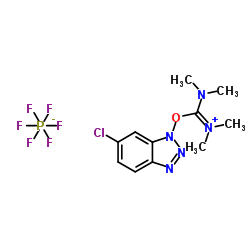Alkylation of a human telomere sequence by heterotrimeric chlorambucil PI polyamide conjugates.
Gengo Kashiwazaki, Toshikazu Bando, Ken-ichi Shinohara, Masafumi Minoshima, Hana Kumamoto, Shigeki Nishijima, Hiroshi Sugiyama, Gengo Kashiwazaki, Toshikazu Bando, Ken-ichi Shinohara, Masafumi Minoshima, Hana Kumamoto, Shigeki Nishijima, Hiroshi Sugiyama, Gengo Kashiwazaki, Toshikazu Bando, Ken-ichi Shinohara, Masafumi Minoshima, Hana Kumamoto, Shigeki Nishijima, Hiroshi Sugiyama
Index: Bioorg. Med. Chem. 18 , 2887-2893, (2010)
Full Text: HTML
Abstract
We designed and synthesized human telomere alkylating N-methylpyrrole-N-methylimidazole (PI) polyamide conjugates (1-6). The C-type conjugates 1-3 possessed a chlorambucil moiety at the C terminus, whereas the N-type conjugates 4-6 had one of these moieties at the N terminus. The DNA alkylating activity of these conjugates was evaluated by high-resolution denaturing polyacrylamide gel electrophoresis using a 220bp DNA fragment containing the human telomere repeat sequence 5'-(GGGTTA)(4)-3'/5'-(TAACCC)(4)-3'. C-type conjugates are designed to alkylate the G-rich-strand-containing 5'-GGGTTA-3' and N-type conjugates were designed to alkylate the complementary C-rich strand-containing 5'-TAACCC-3' sequence. The difference between conjugates 1-3 and 4-6 lies in the linker region between the polyamide moiety and chlorambucil. Conjugates 1 and 4 efficiently alkylated the 5'-GGTTAGGGTTA-3' and 5'-CCCTAACCCTAA-3' sequences, respectively, by recognizing 11bp in the presence of distamycin A (Dist), in a heterotrimeric manner: one long alkylating polyamide conjugate (1-6) and two short partners (Dist).Copyright 2010 Elsevier Ltd. All rights reserved.
Related Compounds
| Structure | Name/CAS No. | Molecular Formula | Articles |
|---|---|---|---|
 |
HCTU
CAS:330645-87-9 |
C11H15ClF6N5OP |
|
Near-infrared pH-activatable fluorescent probes for imaging ...
2011-04-20 [Bioconjug. Chem. 22 , 777-784, (2011)] |
|
Proteasome selectivity towards Michael acceptor containing o...
2010-04-21 [Org. Biomol. Chem. 8 , 1885-1893, (2010)] |
|
Rapid covalent ligation of fluorescent peptides to water sol...
2010-07-28 [J. Am. Chem. Soc. 132 , 10027-10033, (2010)] |
|
Tandem oligonucleotide synthesis on solid-phase supports for...
2002-02-08 [J. Org. Chem. 67 , 856, (2002)] |
|
Fast conventional synthesis of human beta-amyloid (1-42) on ...
2009-01-01 [Adv. Exp. Med. Biol. 611 , 173-174, (2009)] |